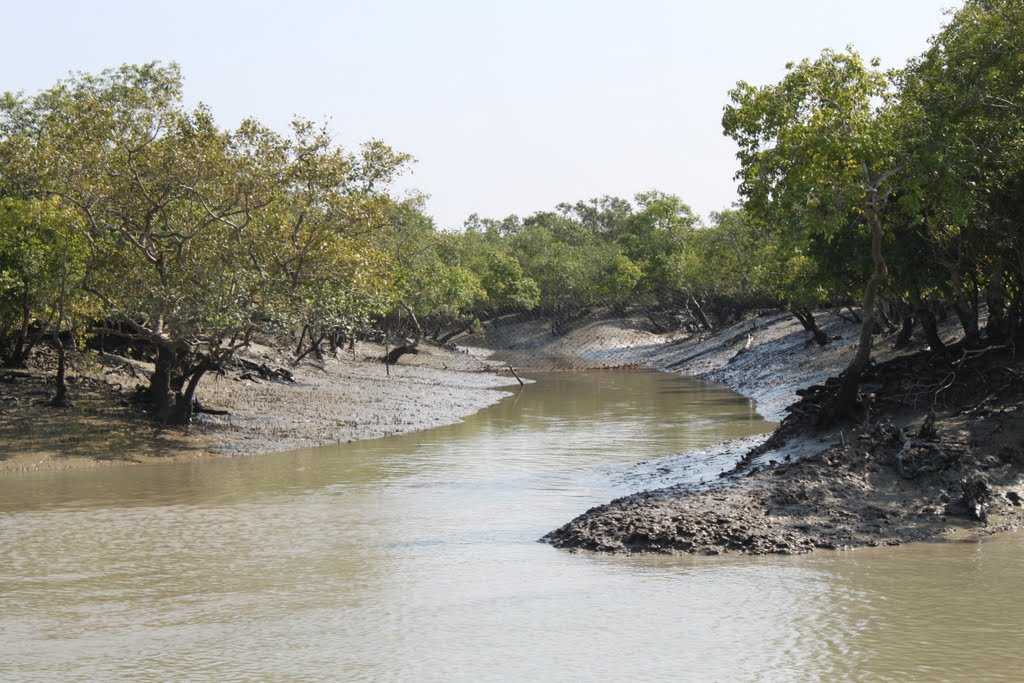
Sundarban National Park world heritage property is blessed with the three wildlife sanctuaries (Sundarbans West, East and South) which are the main breeding place of a number of rare species of endangered wildlife. Creeks, swaps, islands, rivers, estuaries, deep merged forest, large muddy areas and tidal flats are the ultimate beautiful part of the Sundarbans. Famous for the Royal Bengal Tigers, the Sunderban National Park is a known Tiger reserve and a Biosphere reserve located at the South Eastern tip of the 24 Paraganas district of West Bengal. It got its name from one of the mangrove plants known as Sundari (Heritiera Minor). The Sundarbans are a part of the world's largest delta formed by the rivers Ganges, Brahmaputra and Meghna. Sundarban is a vast area covering 4262 square kms in India alone, with a larger portion in Bangladesh. 2585 sq. kms of the Indian Sundarban forms the largest Tiger Reserve and National Park in India. An Indian portion of Sundarbans is listed in the UNESCO World Heritage sites. The total area of the Indian part of the Sundarban forest, lying within the latitude between 2113'-2240' North and longitude 8805'-8906' East, is about 4,262 sq km, of which 2,125 sq km is occupied by mangrove forest across 56 islands and the balance is under water. The park is surrounded by a buffer zone of 885 square kilometers. The core area of the park has its own natural boundaries with the river Matla on its West, the river Haribhanga on its East, with Netidhopani and Gosba in the North. It is one of the largest reserves in India covered mostly by dense Mangrove forests. It's the world's largest mangrove forest reserve. Home to the critically endangered Royal Bengal Tiger, there are also other animal species such as the gangetic dolphin, spotted dear, wild boar, Monitor Lizard, Estuarine Crocodile and the Olive Ridley Turtle, Indian Rhinoceros, Javan Rhinoceros, Swamp Deer, Hog Deer and Water Buffalo and other mammal and amphibian species.
The tiger population of India is the maximum in this location. Because of frequent contacts with local inhabitants, several tigers have been labelled as 'man-eaters'. This delta land is the natural habitat of royal tigers but there is a huge range of different species. Indian python, different kind of fishes, several reptiles, around 260 species of beautiful birds, spotted deer and saltwater crocodiles are the permanent wildlife member of Sundarbans. It is also a home of a large variety of migratory birds like egret, fishing eagle, kingfisher, black-tailed godwit ,ester knot curlew and golder plover. Around 4 million people live in the Sundarbans, they are dependent on the traditional crops during the dry seasons and in the wet season fish and prawn farming is the source of livelihood.